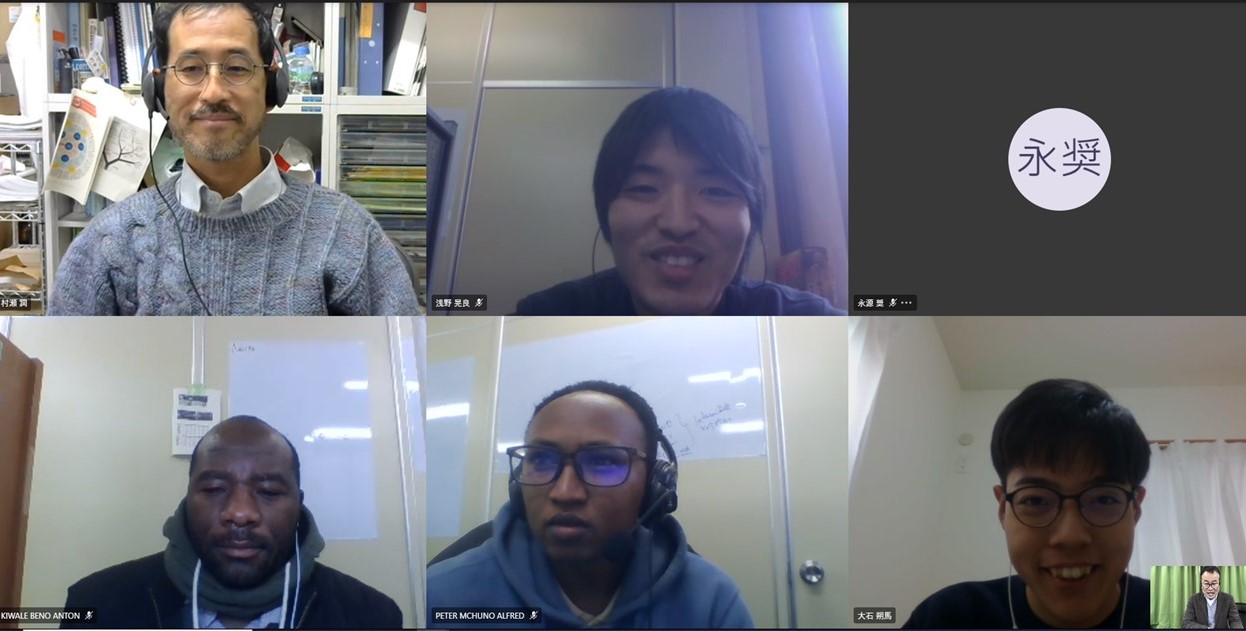名古屋大学の村瀬先生(附属フィールド科学教育研究センター)をお招きし水田の土壌微生物学を講義して頂きました。有機物の有効活用は持続的農業を達成するうえで非常に重要です。圃場へ投入された有機物は土壌微生物によって分解される過程で無機態窒素を作物へ供給します。ここでいう分解とは主に細菌による呼吸のことを指します。水に満たされることで酸欠状態の水田土壌では、呼吸に酸素を必要としない各種細菌が有機物分解に関与します。実はこれら細菌を捕食する繊毛虫、鞭毛虫、アメーバなどの原生動物こそが無機態窒素を作物へ直接的に供給する役割を担っています。すなわち、有機物に含まれる窒素は呼吸の過程で細菌の体内に取り込まれるわけですが、これら細菌を捕食した原生動物の排せつ物に無機態窒素が含まれており、作物はそれを吸収利用するという仕組みです。村瀬先生はこの複雑な「有機物による窒素供給」の過程を単純明快に解説して下さり、目から鱗が落ちるような時間帯でした。水田における有機物の役割を研究する留学生のために全編英語で解説して下さり、留学生も大いに感激していました。今年一年を締めくくる非常に素晴らしい時間となりました。
Professor Jun Murase of Nagoya University gave our graduate students a lecture of soil microbiology in rice fields. Effective use of organic materials is very important for sustainable agriculture. Organic materials supply mineralized nitrogen to crops after being decomposed by soil microbes. In this case, decomposition is mainly governed by bacterial respiration. Because soils in rice fields are usually deficient in oxygen gas due to flooding condition, many bacterial species that require no oxygen gas for respiration are involved in decomposition of organic materials. Such protozoa as ciliates, flagellates, and amoeba grazing on those bacterial species are the ones which supply mineralized nitrogen directly to crops. Nitrogen in organic materials is taken into bacterial body during decomposition, but excrements of protozoa gazing on those bacteria contain mineralized nitrogen which, in turn, is taken up by crops. Because Professor Murase explained this important but complicated process concisely in English, the two Tanzanian students engaged in the study of organic material use in rice fields were so excited. I was also happy to listen to his lecture. It was a wonder end-of-year lecture in 2020.

Comments are closed